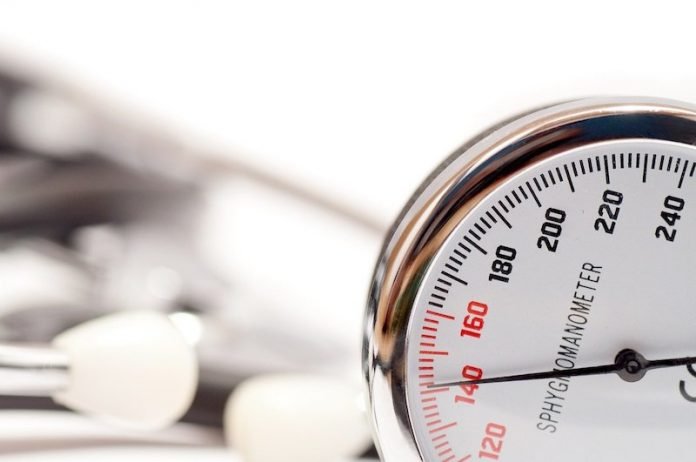
In a new study published in the Journal of the American Heart Association, researchers found that working out just five minutes daily via a practice described as “strength training for your breathing muscles” lowers blood pressure as well as, or even more than, aerobic exercise or medication.
The study provides the strongest evidence yet that the ultra-time-efficient maneuver known as High-Resistance Inspiratory Muscle Strength Training (IMST) could play a key role in helping aging adults fend off heart disease––the nation’s leading killer.
The study is from the University of Colorado Boulder. One author is Daniel Craighead.
In the United States alone, 65% of adults over age 50 have above-normal blood pressure––putting them at greater risk of heart attack or stroke. Yet fewer than 40% meet recommended aerobic exercise guidelines.
Developed in the 1980s as a way to help critically ill respiratory disease patients strengthen their diaphragm and other inspiratory (breathing) muscles, IMST involves inhaling vigorously through a hand-held device that provides resistance.
Imagine sucking hard through a tube that sucks back. Initially, when prescribing it for breathing disorders, doctors recommended a 30-minute-per-day regimen at low resistance.
But in recent years, researchers have been testing whether a more time-efficient protocol––30 inhalations per day at high resistance, six days per week––could also improve heart, cognitive and sports performance.
In the study, the team recruited 36 healthy adults ages 50 to 79 with above normal systolic blood pressure (120 millimeters of mercury or higher).
Half did High-Resistance IMST for six weeks; and half did a placebo protocol, in which the resistance was much lower.
When assessed after six weeks, the IMST group saw their systolic blood pressure (the top number) dip 9 points on average, a reduction which generally exceeds that achieved by walking 30 minutes a day five days a week.
That decline is also equal to the effects of some blood pressure-lowering drug regimens.
Even six weeks after they quit doing IMST, they maintained most of that improvement.
The treatment group also saw a 45% improvement in vascular endothelial function, or the ability for arteries to expand upon stimulation, and a big increase in levels of nitric oxide, a molecule key for dilating arteries and preventing plaque buildup.
Nitric oxide levels naturally decline with age. Markers of inflammation and oxidative stress, which can also boost heart attack risk, were much lower after people did IMST for six weeks.
And, remarkably, those in the IMST group completed 95% of the sessions.
These findings suggest a novel form of therapy that lowers blood pressure without giving people drugs and with much higher adherence than aerobic exercise.
If you care about high blood pressure, please read studies about this common juice may help reduce high blood pressure and findings of new advice for treating high blood pressure.
For more information about blood pressure control, please see recent studies about common high blood pressure drug can help repair blood vessels in brain and results showing that common anti-inflammation drug may increase your blood pressure.
Copyright © 2021 Knowridge Science Report. All rights reserved.



